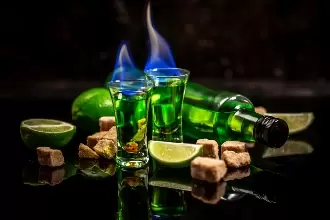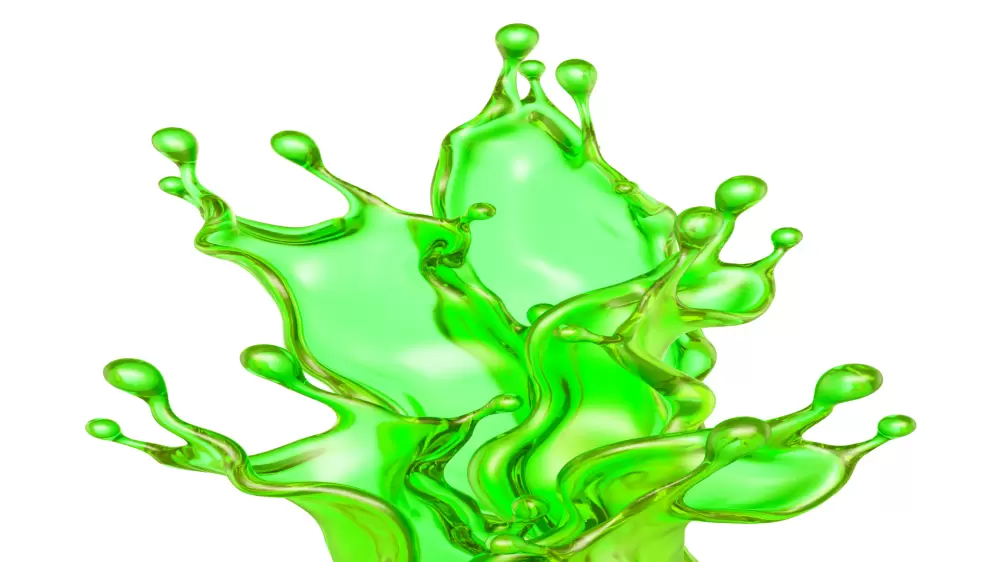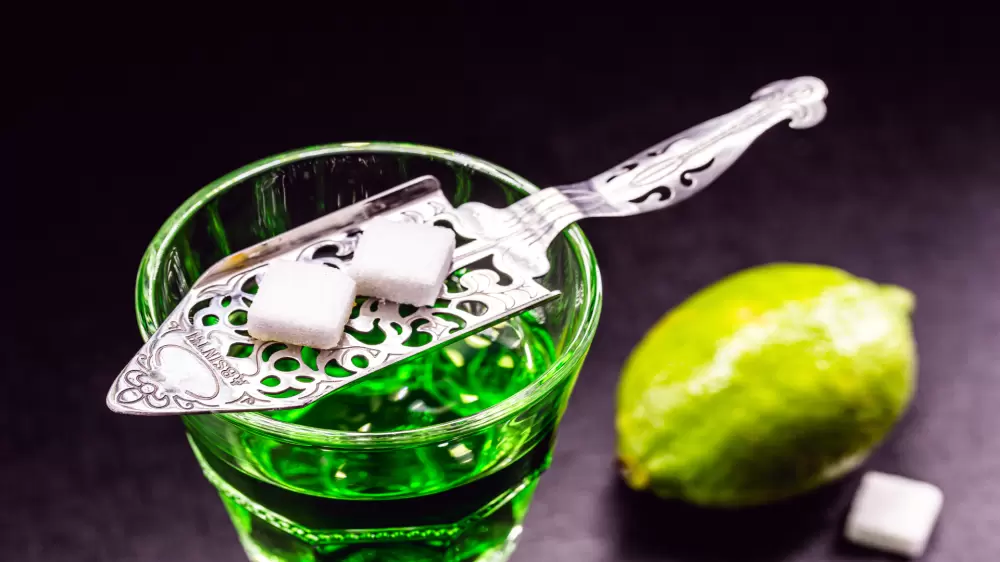ABSINTH: EVERYTHING YOU WANTED TO KNOW

Almost everyone knows the drink absinthe, but do you know exactly what it is? It is known for its bright green color and seemingly hallucinogenic effects. But absinthe is surrounded by myths and tall tales. It is questionable how much is true of what is said about the herb it is made from (wormwood) or the drink. How did this bad reputation come about and what exactly are the effects? In this blog you can read everything you wanted to know about absinth.
Absinth comes from wormwood
Before we take a closer look at the drink, let's first take a look to explain what absinthe is actually made of. The base of the potion is wormwood absinthe, a plant that is a member of the composite family. There are other types of wormwood, these are well-known herbs such as tarragon, lemongrass and mugwort. Wormwood absinthe has a strong odor and a particularly bitter taste. The plant grows well in temperate areas and is found in Europe, Asia and North Africa. The plant grows to an average height of between 60 and 120 cm and the leaves are grey-green on top and white on the underside. In the summer wormwood absinthe blooms with bulbous yellow flowers. Absinth, the drink, is made from the leaves and flowers.
Because of the bitter taste, however, more is added to absinth. Usually these are other herbs and spices, such as anise and coriander. That is the taste that absinth has become known for. Sugar is also often added.

How did absinthe get its fame?
The plant itself has been used for thousands of years, mainly for its possible medicinal properties. characteristics. In ancient Egypt, wormwood was prescribed for a mysterious disease called Uka. In earlier times wormwood absinthe-alsem also prescribed for digestive problems. Because of the bitter substances, wormwood can possibly stimulate the metabolism and the production of the hormone gastrin. This could promote the production of gastric juices and therefore make it easier to digest food. Furthermore, wormwood could also be used for worms, it could have an antibacterial effect and it has calming properties.
But it took until the end of the 18th century for wormwood on a made a name for himself in another way. The Henriod sisters from Switzerland incorporated the herb into a drink and from the beginning of the 19th century there was a shift from absinthe as a medicinal drink to drinking it purely for pleasure. Soldiers were given it as a remedy for malaria, but they liked it very much and took it back home. Absinth was poured into bars and cafes all over the place not long after that. Both the rich and the poor drank it and its popularity increased rapidly.
However, there were also those who believed that absinthe was dangerous, that it had a negative influence on the mind and that it got mad. In Switzerland the drink was banned in 1908 and other European countries because of the hallucinatory properties, including the Netherlands, also banned it afterwards. Since 2005 the ban has expired and it can be used freely again.

The effects of absinth
But what about now? What are the effects of absinth or wormwood? Nowadays, we can find out much better what the effect of certain substances is. According to the stories, absinthe is said to have hallucinatory properties. However, this is not true and this myth has arisen because it was thought that wormwood has mind-altering effects.
However, wormwood does not have a hallucinatory effect. It is true that thujon in wormwood (an organic compound) has slightly hallucinatory effects, but then you have to use very high doses. It is more likely that you will be more affected by the strong alcohol (55 to 70%) than the wormwood. Another reason absinth got a bad name is because copper was added to the drink. This was done to give it that nice green color. However, it may well be that copper was the reason that absinth had harmful effects.
The somewhat rough history behind absinth also makes it an interesting drink. And so it's certainly not poisonous or more dangerous than any other alcoholic drink. In our webshop you will find various options for creating your own absinth made with dried herbs or extracts. It is usually made with vodka. So, although absinthe itself is not dangerous, spirits can of course pose health risks Drink absinthe in moderation, it has calming properties and stimulates creativity.
Be careful with the use of wormwood if you are taking certain medicines, such as MAO inhibitors, and do not use it if you are pregnant or breastfeeding. Do not drive if you have drunk absinthe.




















